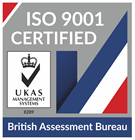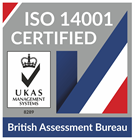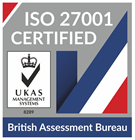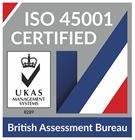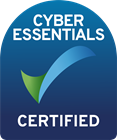Improving safety and compliance with IoT
We often take safety for granted and tend to assume that the food we buy or the premises we’re staying in is safe. The introduction of food safety ratings in cafés and takeaways has increased our awareness of the issue but has highlighted a significant number of zero-rated premises who could be putting people at risk.
Another area, water temperature has guidelines for monitoring and risk reduction, yet in 2018, 814 cases of Legionnaires disease were reported in the UK and on average causes 35 deaths a year.
University or private operated accommodation often contain retail outlets which offer a range of meals and snacks to students. The accommodation facilities themselves also provide hot and cold water for washing and cleaning, usually in a centralised system. Like other establishments, providers are required to adhere to guidelines regarding food safety and the temperature of water. This is often a manual exercise and consequently it’s common for checks to be forgotten or inadequately recorded, which has potential to cause serious problems.
So, if the human interface is the potential problem, how can technology be used to overcome this?
Industry analysts are predicting that the Internet of Things (IoT) will be one of the next big technology trends, changing how the objects around us interact, helping improve how we live, work and relax. Looking at student accommodation specifically, the IoT offers exciting possibilities to improve compliance and food safety by real time monitoring and improved record keeping.
For example, a chiller used for storing food in the accommodation café will have a built-in thermometer, these must be checked manually to ensure that food is stored within a safe range, often just once or twice a day. The fridge can be fitted with a smart sensor and the temperature monitored constantly from a remote management portal. If the temperature steps outside the acceptable range, an alarm can be raised, the problem investigated, and potentially harmful food destroyed.
Similar technology can be employed for water temperature monitoring. Sensors fitted inline to pipes mean there’s no need to periodically test the supply manually. Instead automatic reading and logging can be performed, raising an alert in the event of an unsafe temperature, prompting system maintenance to be performed.
In both examples it’s clear to see that the technology has the edge over the human when it comes to safety. Not only can it provide real time data, but it also frees up time for staff to concentrate on other aspects of their role or reduces the need to use the services of third party testing companies.
The Internet of Things promises to dramatically improve the opportunities for automated monitoring and real-time control for accommodation providers. Best of all the technology is available today. Thanks to full fibre and Wi-Fi network infrastructure it can be quickly and easily deployed without disrupting other IP (Internet Protocol) traffic, where it can start to improve compliance and most of all, safety amongst students and staff.
This article originally appeared in the May edition of University Business
